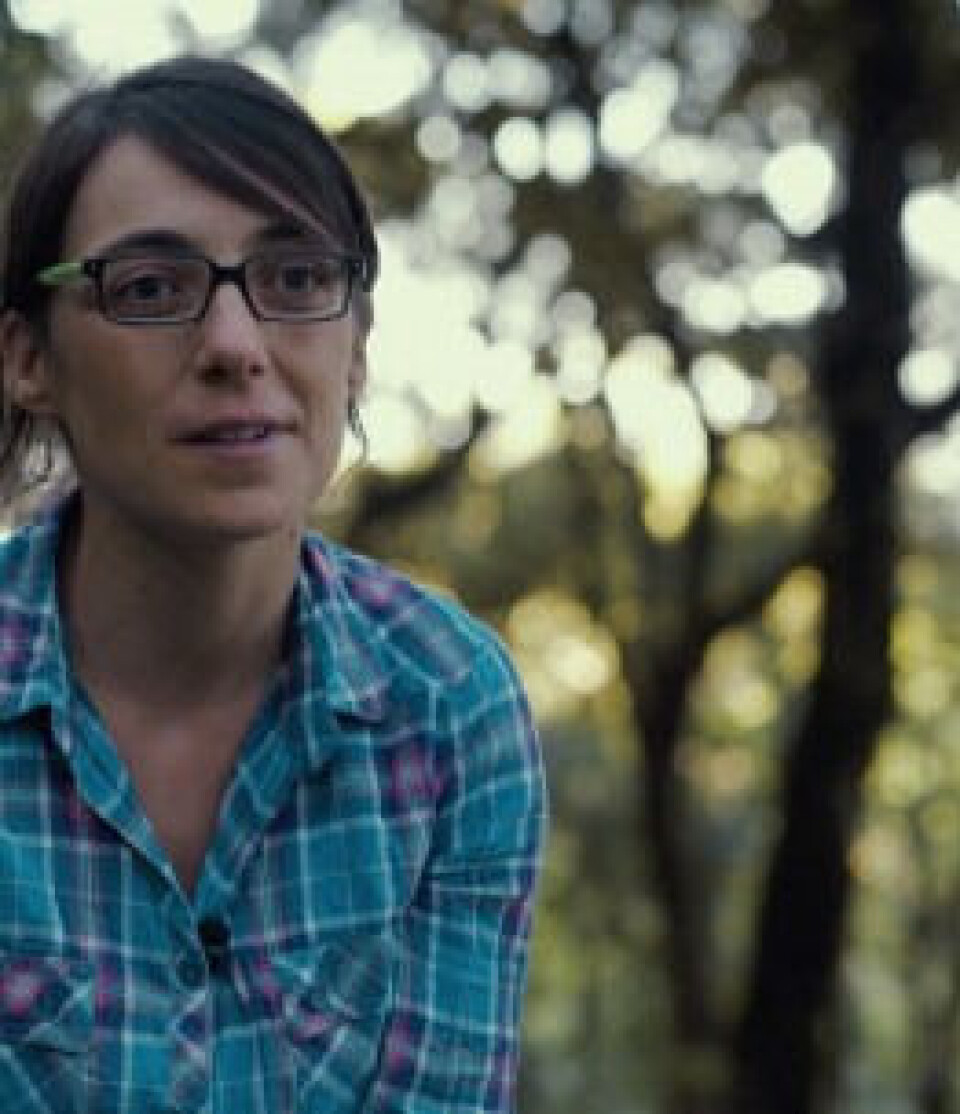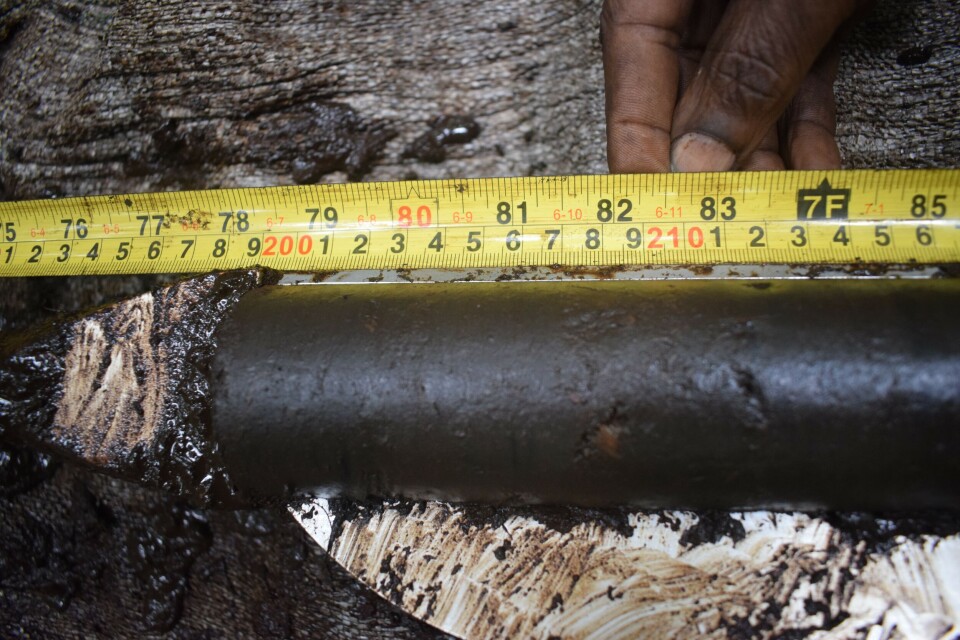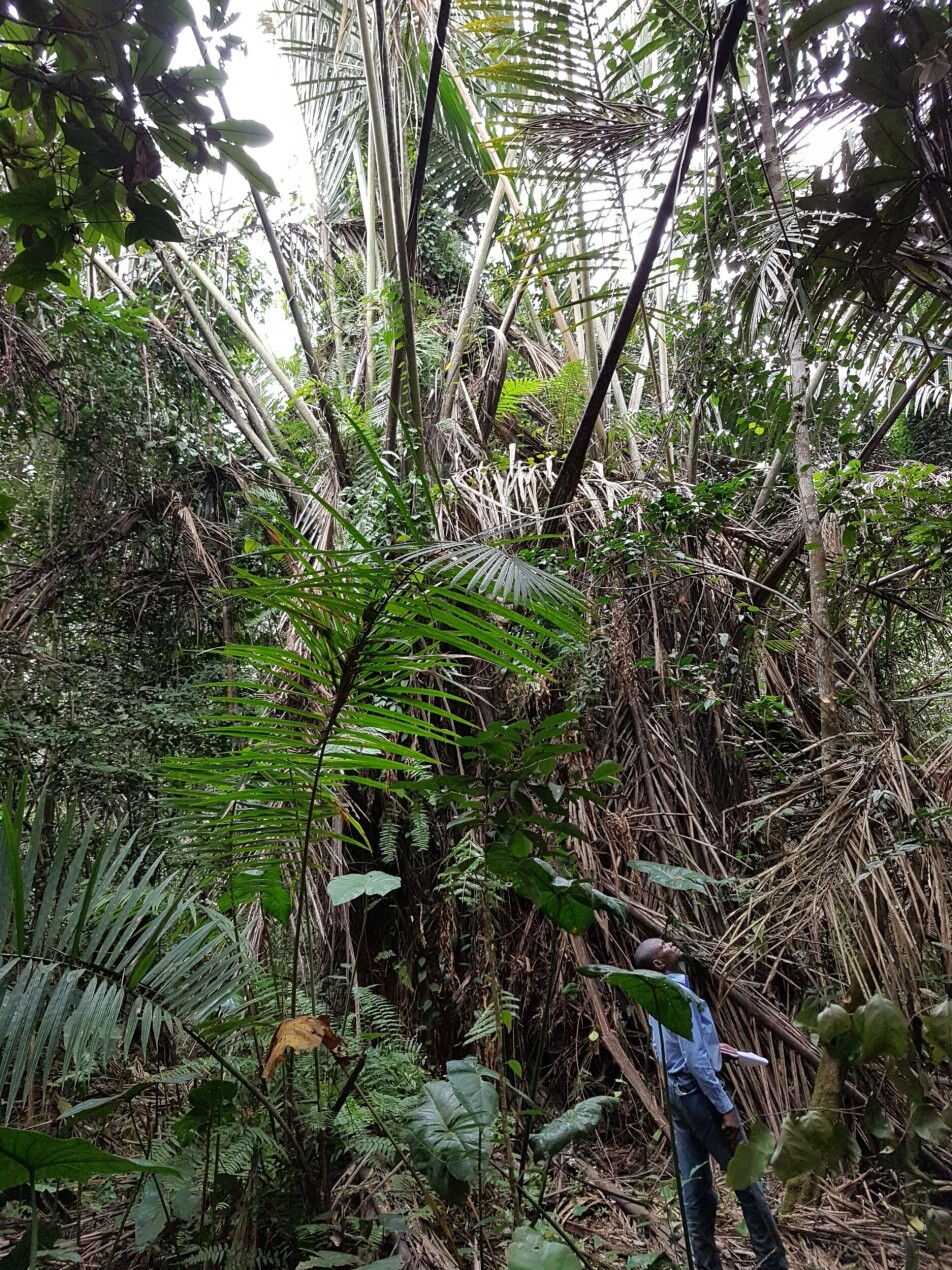THIS ARTICLE/PRESS RELEASE IS PAID FOR AND PRESENTED BY the Norwegian University of Life Sciences (NMBU) - read more

True size of world's largest tropical peatland revealed for the first time
A new study mapped the full scale of a vast region of peatland in the heart of the Congo Basin, revealing it to be 15 per cent bigger than previously thought.
The research, published in Nature Geoscience, found that the peatlands span 16.7 million hectares, equivalent to the size of England and Wales combined. This includes 1 million hectares slated to be auctioned for oil development by the DRC government this week.
The team of European and Congolese scientists, including NMBU environmental scientist Aida Cuní-Sanchez, spent three years visiting scientifically unexplored swamp forests in the DRC.
For the first time, extensive peatlands have been revealed in DRC, with peat up to six and a half metres deep. The findings show that the peatlands in the central Congo Basin store between 26 and 32 billion tonnes of carbon – roughly the equivalent to three years’ worth of global fossil fuel emissions.
Peatland stores as much carbon as entire Congo Basin rainforest
The central Congo basin is home to 36 per cent of the world’s tropical peatland area and stores 28 per cent of the world’s tropical peat carbon, according to the new study.
However, the research shows that only 8 per cent of this peat carbon lies within nationally protected areas, suggesting vulnerability to future changes in land-use.

“Our study highlights not only that the Congolese peatlands are larger than previously thought, but also that – worryingly – only 8 per cent of them lie within nationally protected areas,” Cuní-Sanchez says.
“We hope that by publishing in a high-impact journal we will get more policy attention. We have to engage with governments, logging companies, mining companies, conservation organisations and local communities, to determine how best we can find a balance between carbon storage and development goals,” she says. “The planned actioning of 1 million hectares for oil development this week should definitely not proceed if we are to tackle climate change.”
The lead author of the study, Bart Crezee emphasises the environmental importance of peatlands:
“Our findings really highlight the importance of the Congolese peatlands as a globally important store of carbon,” Crezee, a researcher from the UK’s University of Leeds, says. “As much carbon is stored in this relatively small area of peatland as is found in all the trees of the entire Congo Basin rainforest. The critical importance of keeping this carbon safely stored in tropical peatlands cannot be underestimated in the battle to tackle climate change.”
Mapping the peatlands
The central Congo peatlands were first mapped in a 2017 study, in which the scientists spent three years in the neighbouring Republic of Congo (RoC) and predicted the peatlands to cover an area equivalent to the size of England. Two-thirds of the predicted area of peatland was, however, located in the DRC where no fieldwork had taken place until now.
“The 2017 study provided us with a great foundation for this next phase of research, but we needed to trek into remote peatlands in DRC to sample peat and assess if Central Africa really hosts the world’s largest tropical peatland. It certainly does, and the peatland complex is even larger than we thought back in 2017,” Crezee explains. “After years of work we have hundreds of field measurements of peat depth from across the region which has allowed us to create the first ever maps of how deep the peat is, how much carbon they store, and an accurate map of the largest tropical peatland in the world.”
“We are providing essential information, as the world needs to know where the carbon is stored in order to protect it,” he says.
The researchers worked with 18 villages across both the DRC and RoC, involving over 100 field assistants and local guides. This collective effort allowed the scientists to make 463 measurements of peat depth across the Congo Basin to estimate how much carbon is held in the Central Congo peatlands.
Satellite data was used to predict peat depth in areas where there were no measurements. Combining the peat depth estimates with peat carbon content from peat samples allowed the researchers to calculate the total amount of carbon stored across the region.
They found that many peatlands in the DRC are located in narrow river valleys along the Congo River’s tributaries, in contrast to the wide expanses of peat found between rivers in the RoC.
“To our surprise, the peat in the narrow river valleys of the DRC is at least as deep as in the wider basins in the Republic of Congo,"Crezee says. “In the DRC you’ll find a five-metre deep layer of peat just four or five kilometres into the swamp. But in the Republic of Congo, you only find a peat layer of five metres deep after trekking over 20 kilometres into the swamp.”

Protecting the peatlands
Peat is partially-decomposed plant matter. This wetland soil is more commonly found in cool environments, but the year-round waterlogging in the swamp prevents decomposition. This means that when trees, leaves and roots die, they do not fully rot away and slowly form a layer of peat.
The peat acts as a carbon sink, removing carbon from the atmosphere though past plant growth.
If peatlands dry out, either through changes in land use such as drainage for agriculture or reduced rainfall, peat decomposition can accelerate, releasing the stored carbon into the atmosphere.
The central Congo peat swamp forests are currently one of the most carbon-dense ecosystems on earth, storing an average of 1,712 tonnes of carbon per hectare in peat.
Due to their remote location, the peatlands in the Congo Basin so far have been kept wet because they are relatively undisturbed.
Development on the peatlands could have a disastrous effect global climate change
Parts of the peatlands have been earmarked for oil exploration, as well as planned industrial logging concessions and palm oil development, placing the future of the area under threat.
When the researchers overlaid the new peatland map with plans for changes in land use, they found that a quarter of the carbon stock is threatened by industrial logging, mining or palm oil development.

Professor of Botany of Forest Conservation at the University of Kisangani, Corneille Ewango explains: “The Congolese peatlands are so rich. At one site alone we counted more than one hundred plant species, some of which are almost certainly new to science.”
“People living near the peatlands are using them fairly sustainably, but threats are growing from oil drilling, logging and palm oil plantations. These developments risk the Congolese peatlands emitting vast quantities of carbon dioxide into the atmosphere, which would put global climate commitments out of reach,” he says. “Going forward, plans are needed to increase the incomes of local people while enhancing their abilities to protect the central Congo peatlands, and I hope our work will help secure a better future for the peatlands and its people."
Aida Cuní-Sanchez adds: “In terms of follow-up work, it is very important that we determine ecosystem dynamics. Will soil respiration increase if temperatures rise and dry season length increases? This study is just the tip of the iceberg, there is a lot more to understand.”
Reference:
Crezee et al. Mapping peat thickness and carbon stocks of the central Congo Basin using field data, Nature Geoscience, 2022. DOI: 10.1038/s41561-022-00966-7
See more content from NMBU:
-
We're eating more cashew nuts – and the consequences are serious
-
Do young people with immigrant parents have better health?
-
Who’s picking your strawberries this summer?
-
Can coffee grounds and eggshells be turned into fuel?
-
Rising housing costs fuel inequality in Norway
-
Researchers warn: Climate change in African mountains has a greater impact than previously thought





































